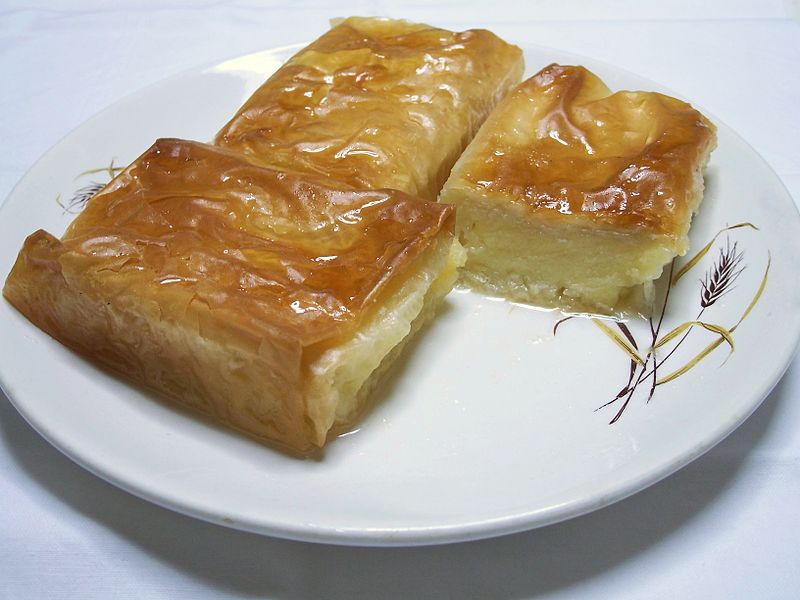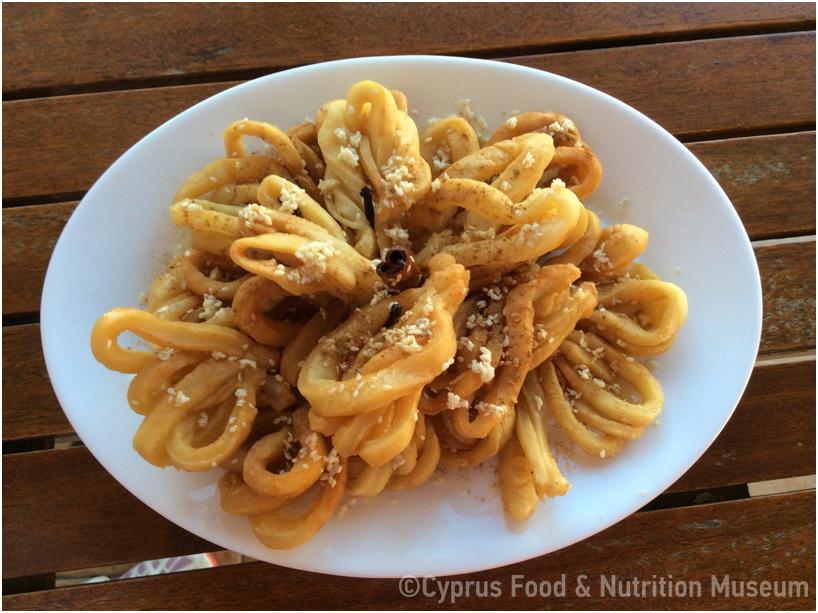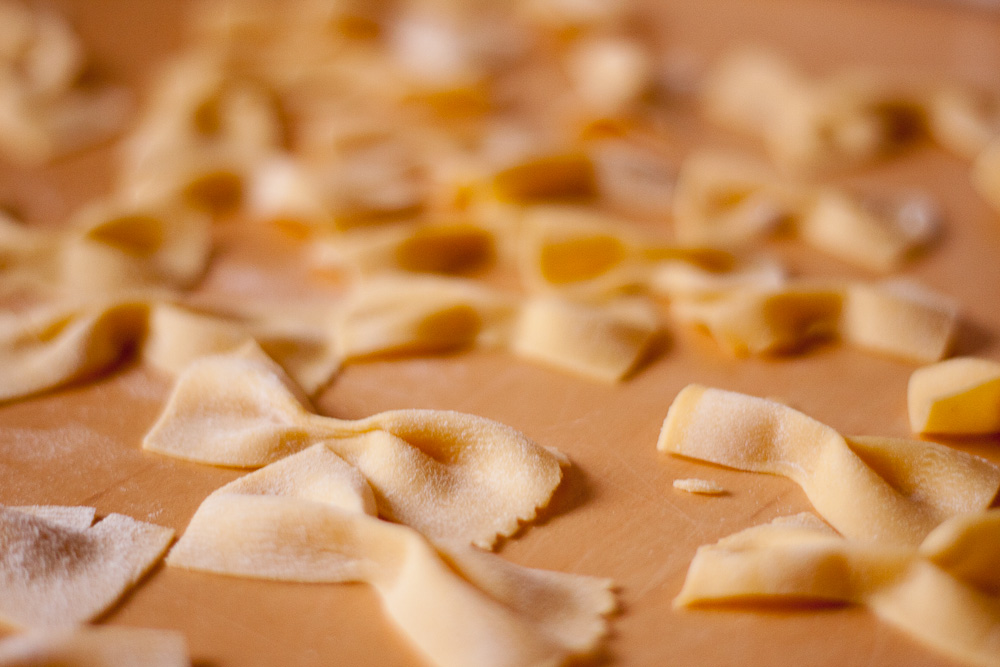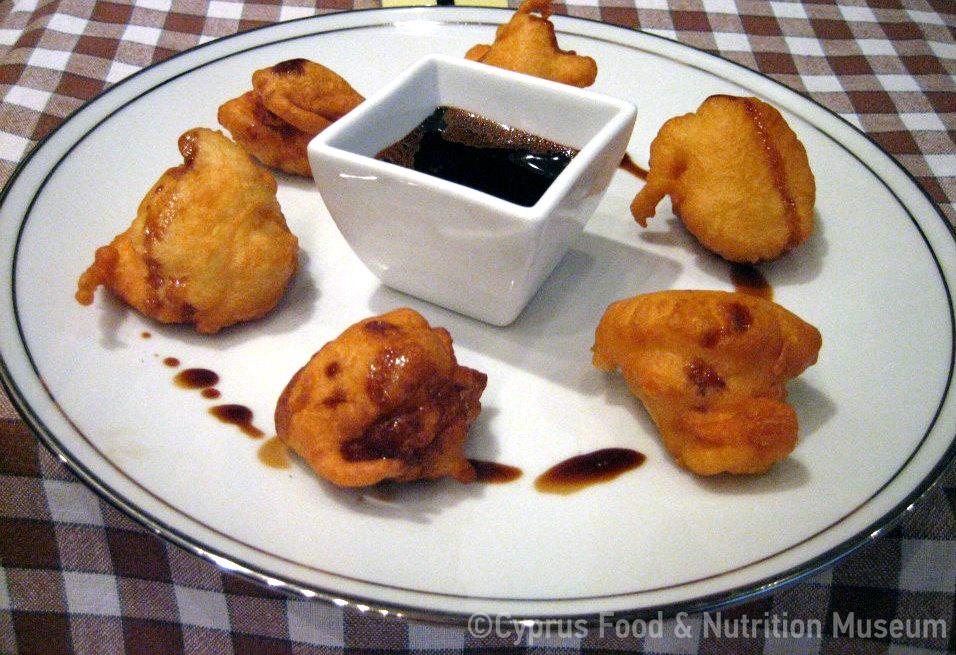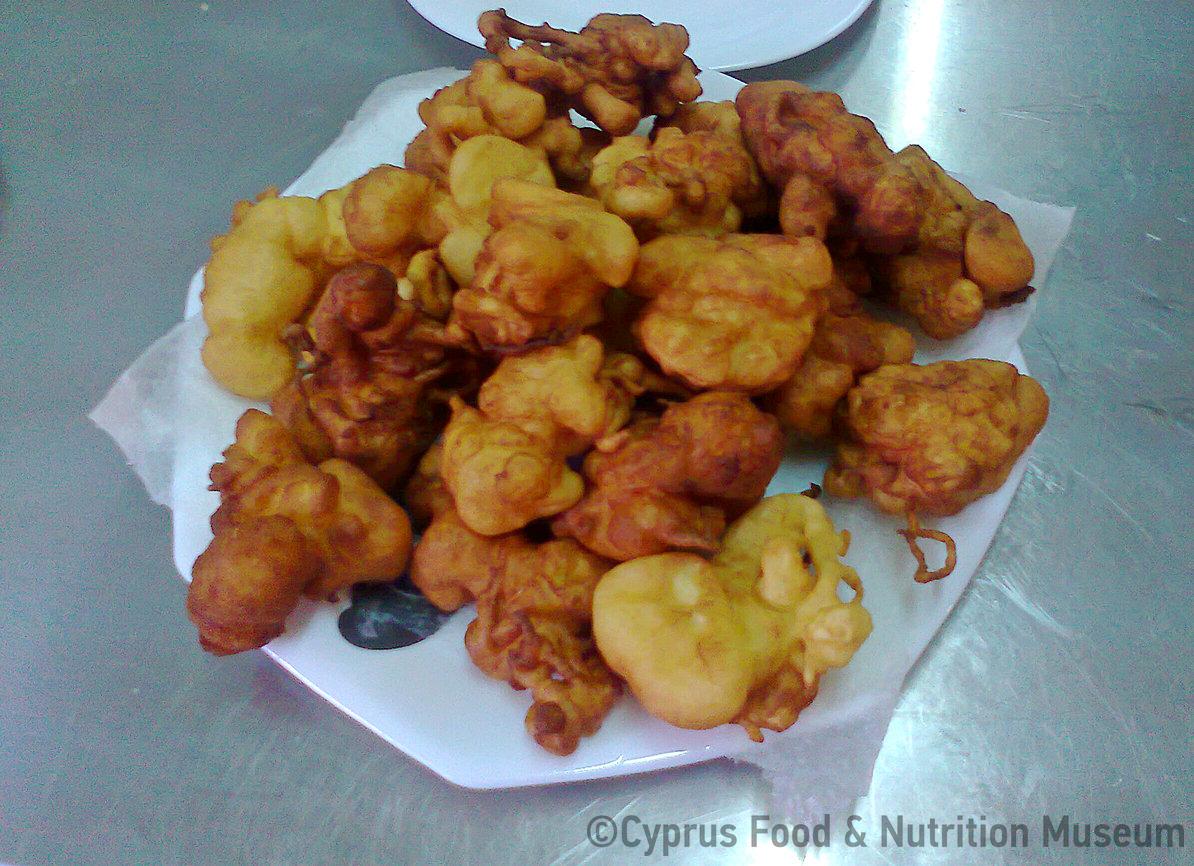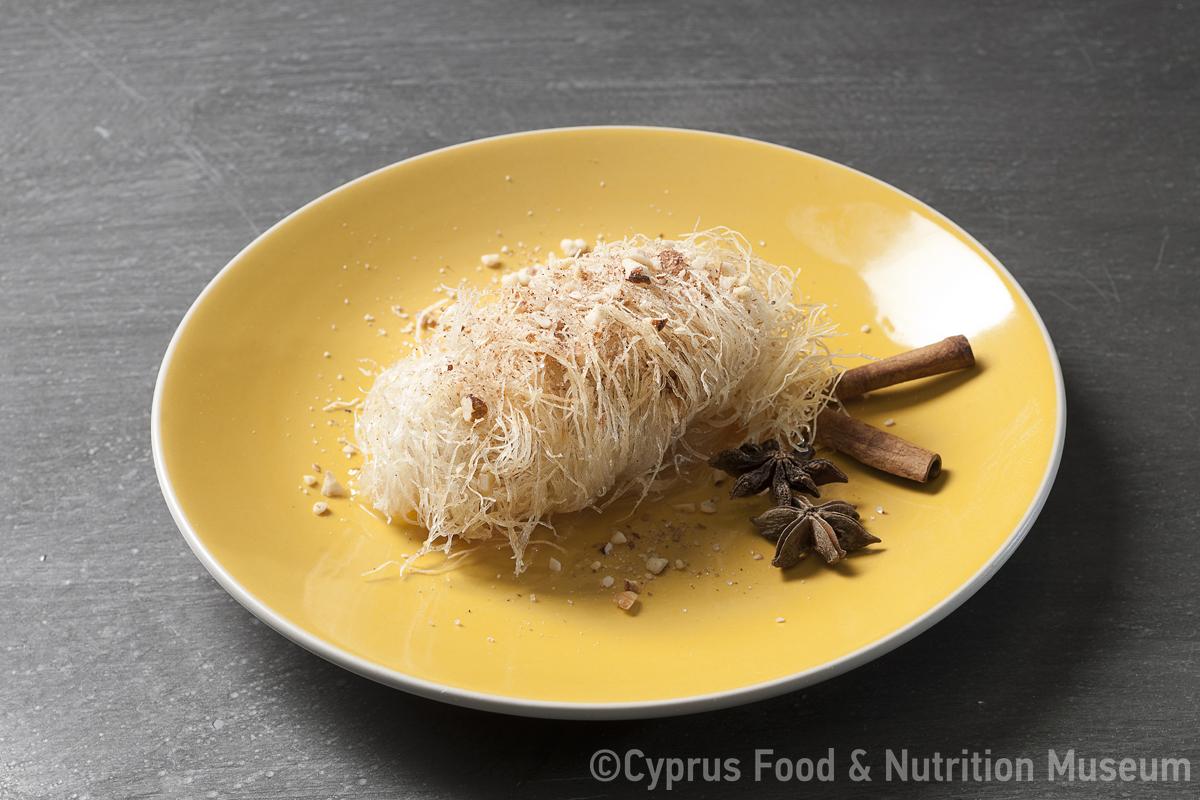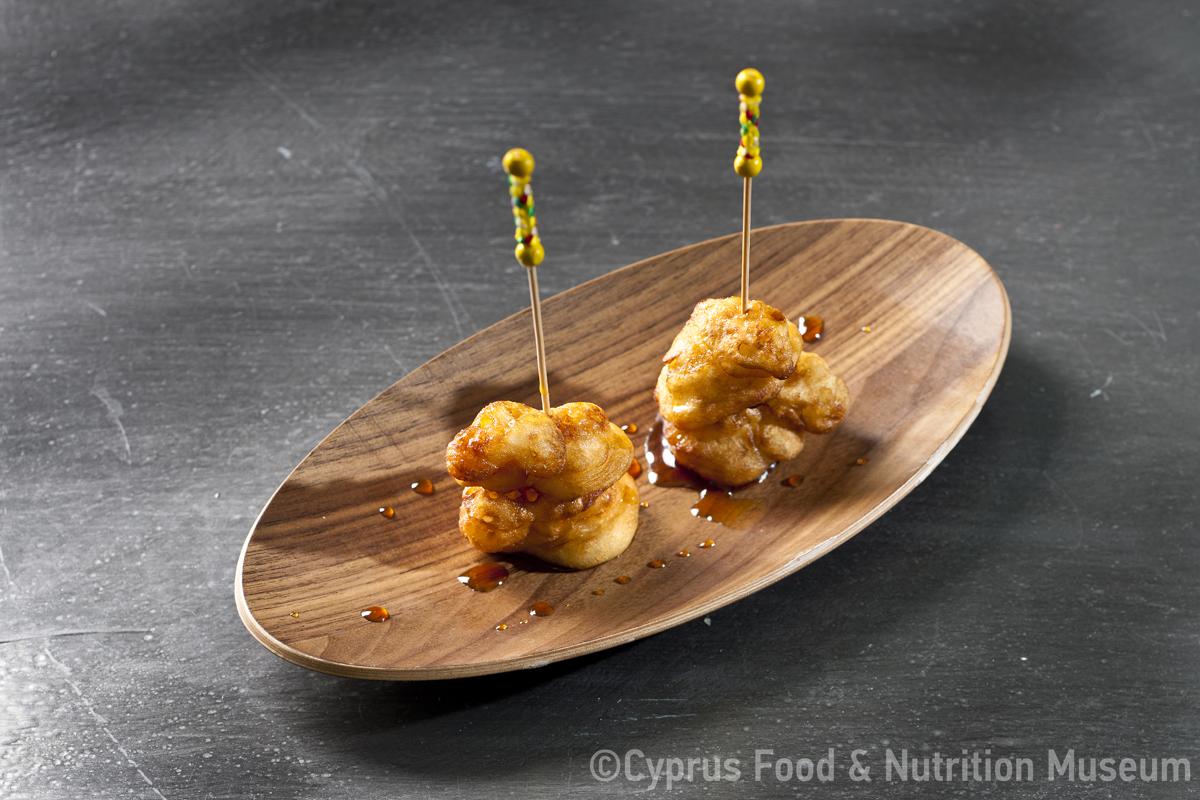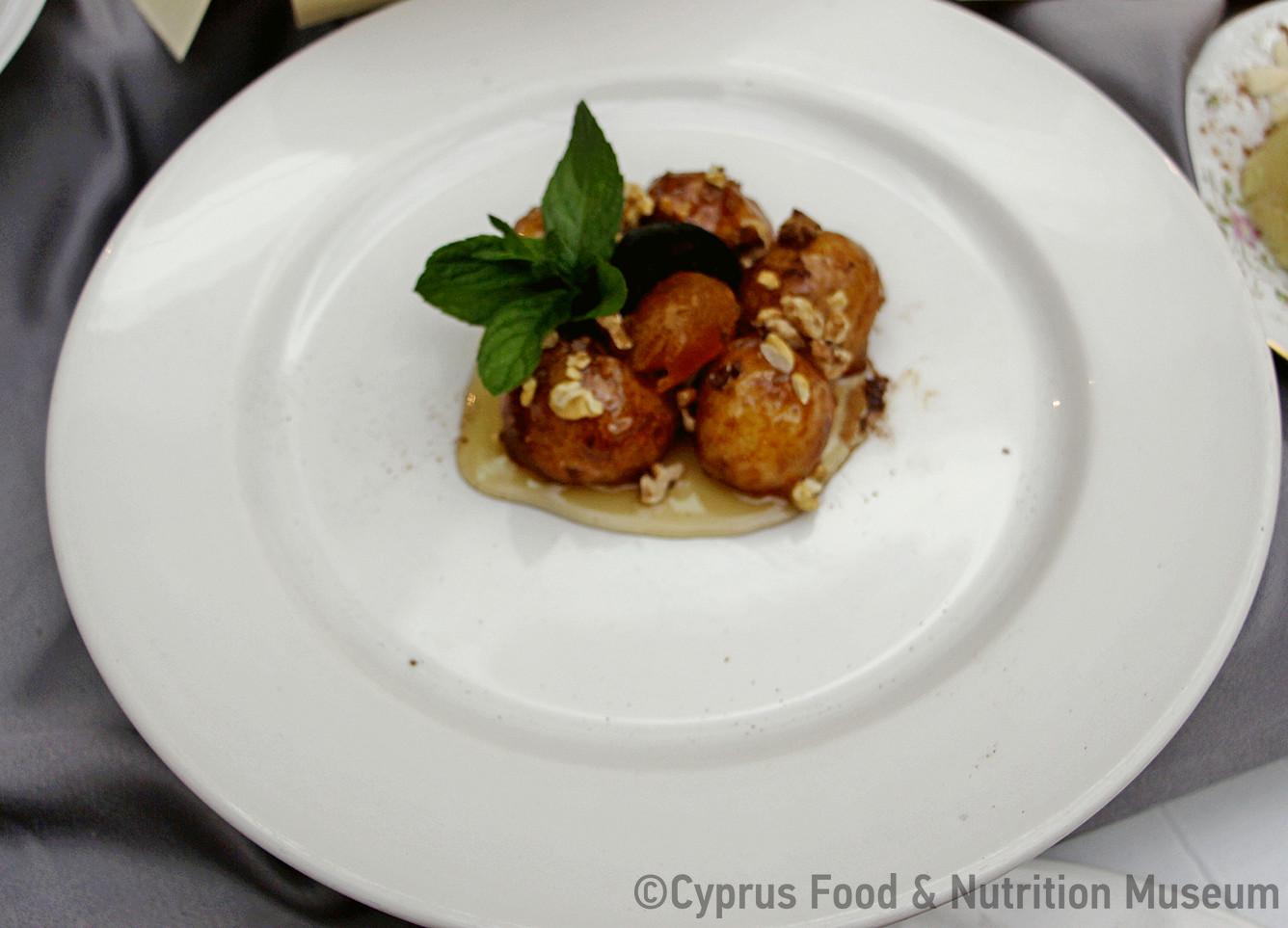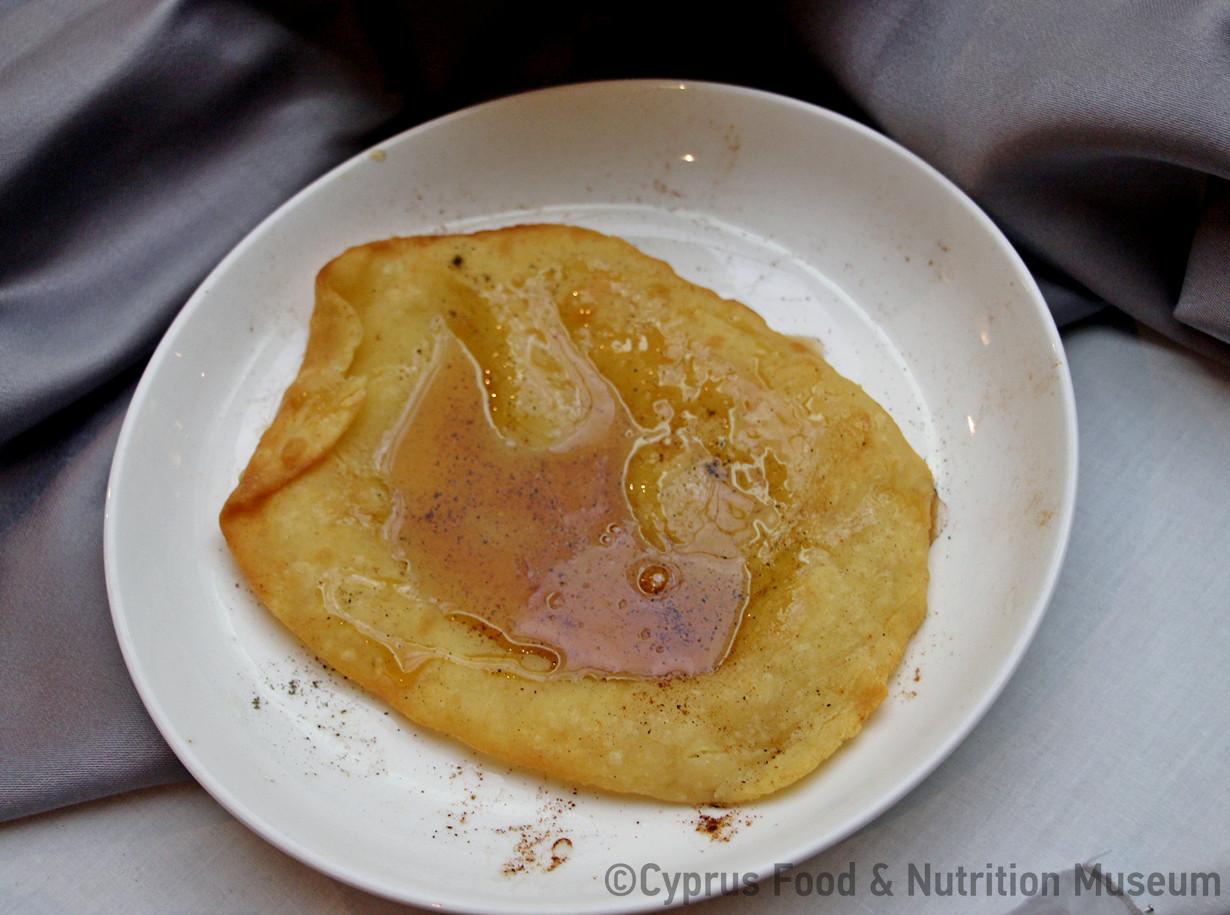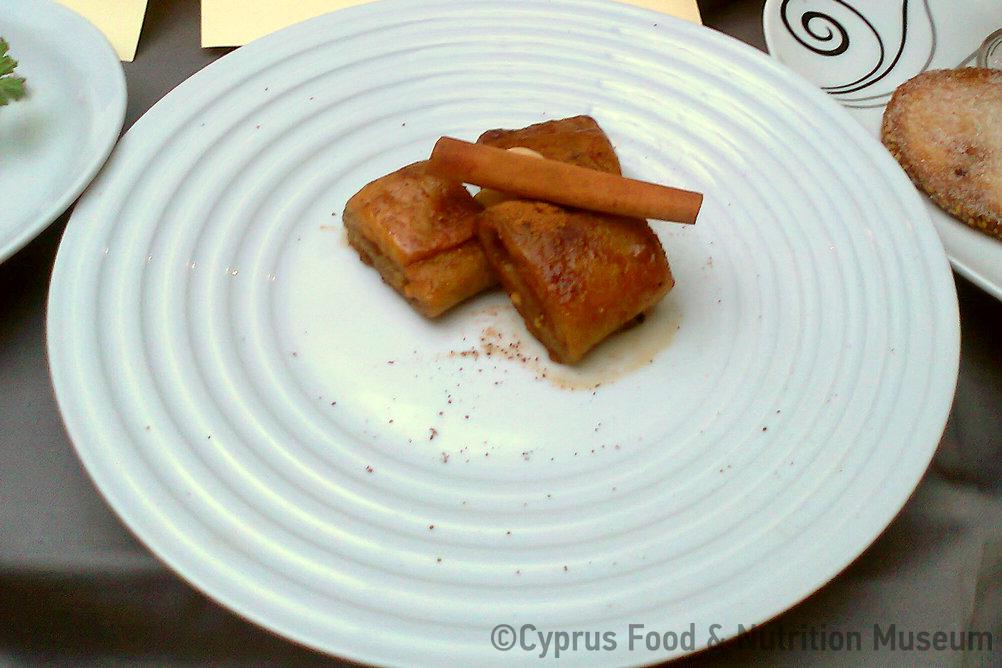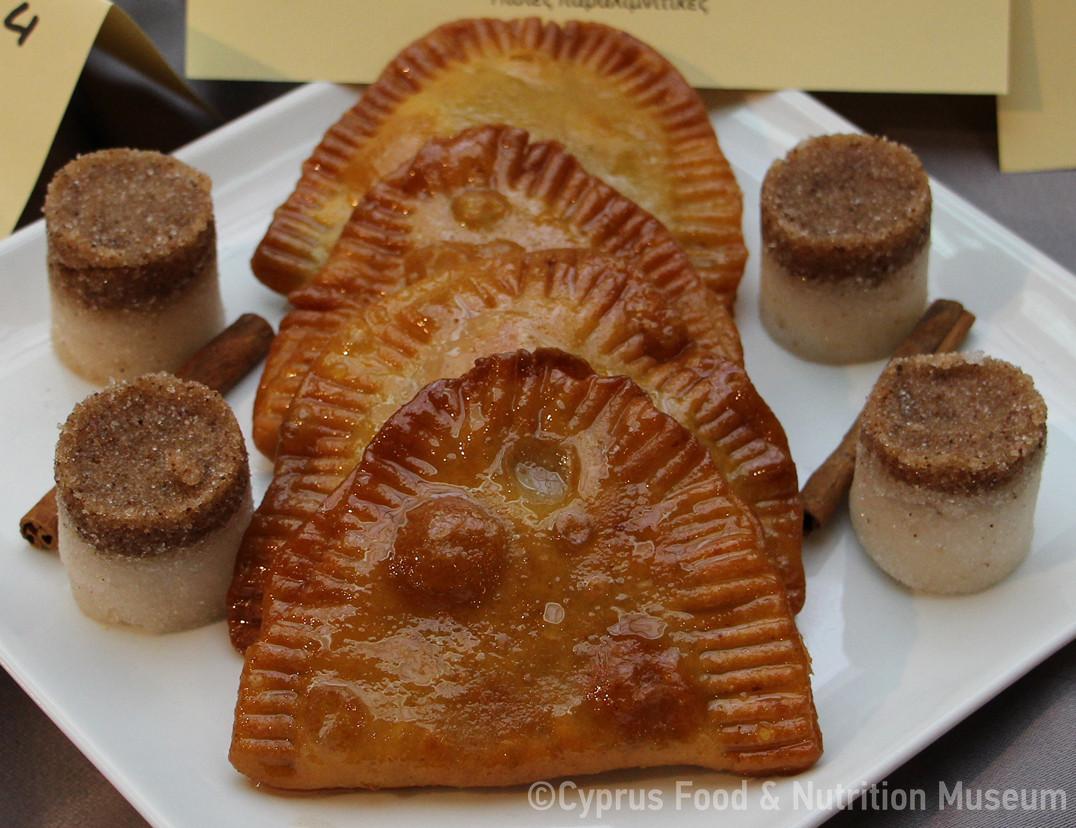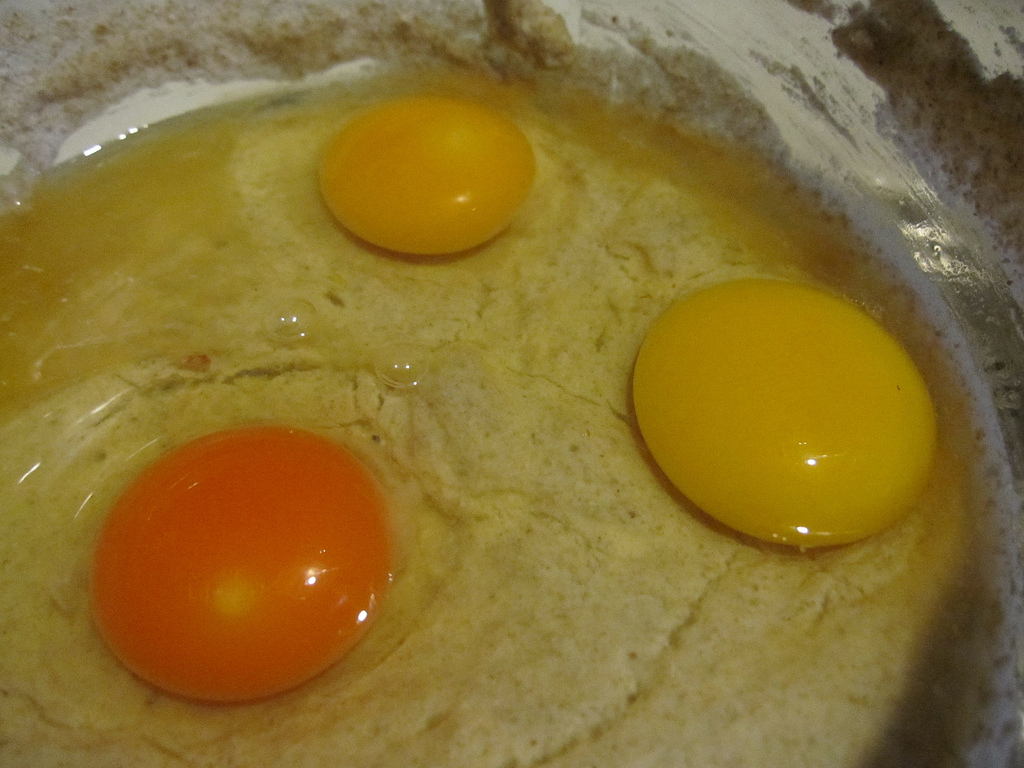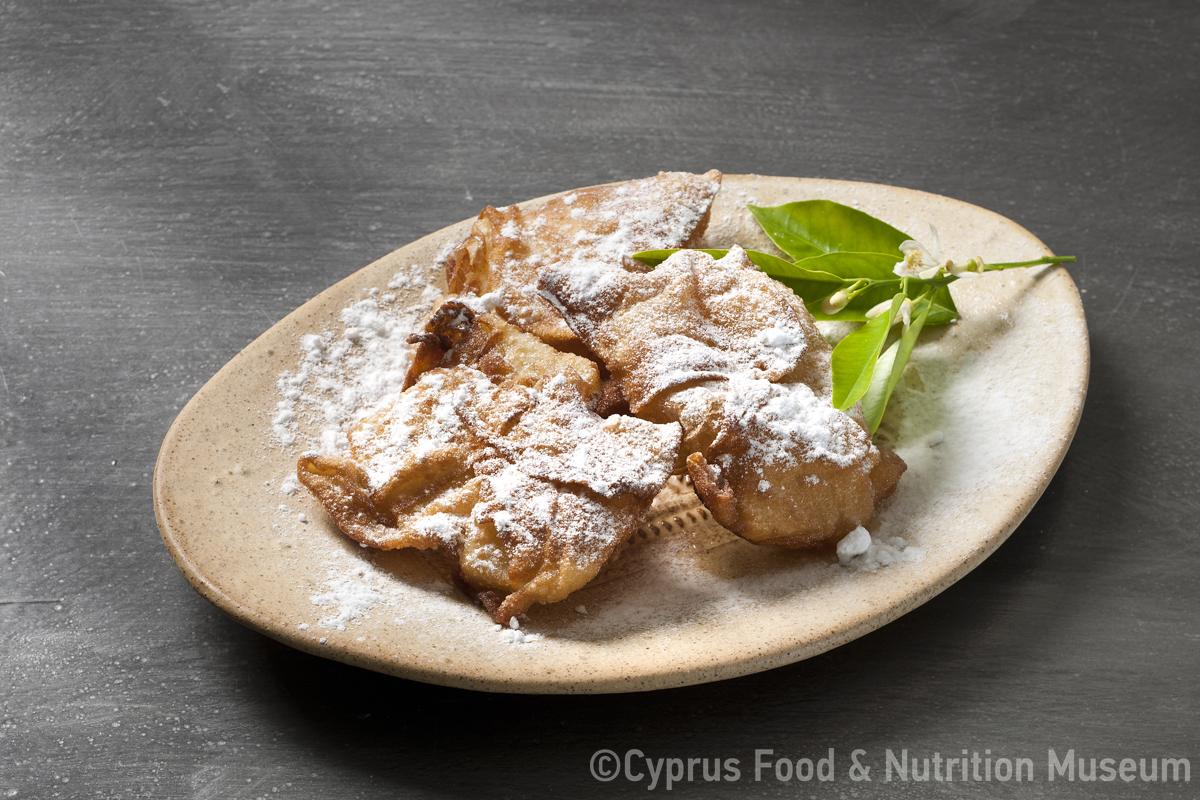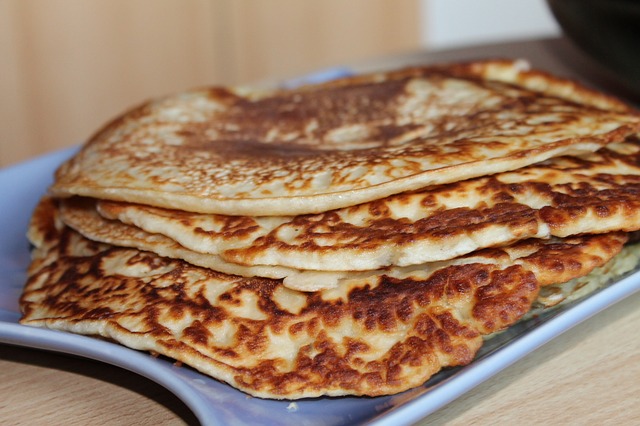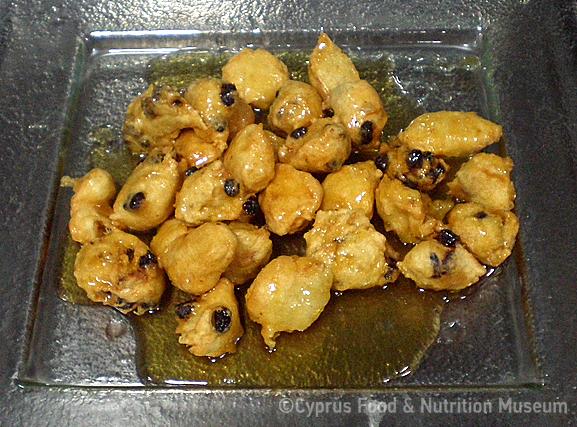A Cypriot sweet that resembles to a honey cruller and its texture to a churro.
Name - Origin
This is the name for loukoumades or tiganítes (Kypri 1983 [2003²], entry εροτήανα,τα, 186).
Georgios Loukas, in his Glossary, describes xerotianon as dry dough which is fried in oil (Kypri 1979 [2002²], entry ξεροτήανον,το, 336).
ETYM. < ξερός (dry) + (τηγάνι) pan (Yangoullis 2009, entry ξεροτήανον,το, 31) in Turkish lokmas (Kypri 1979 [2002²], entry ξεροτήανον,το, 336).
Xerotiana were made with flour, water and sourdough starter. These ingredients were used to make a soft dough. The dough was cut by hand and fried in olive oil. Thus, a hole was formed in the middle (Kypri - Protopapa 2003, 112-117).
Ioannis Erotokritos, in his Glossary, distinguishes the xerotiana into embatá and anémbata. He says that embata are made with a dough which, after having been kneaded, is left for a few hours to rise and afterwards it is fried. Anembata are made without dough. They are made from well beaten flour and water, and then fried in batches. Thus, the anembata are called xerotíana lazá (Kypri 1989, entry ξεροτή(γ)ανα,τα, 92).
There are two types: embatá and anémbata (Kypri 1983 [2003²], entry ξεροτήανα,τα, 186).
Functional and symbolic role
Xerotiana were usually prepared at kálanta and Epiphany. On fasting days, xerotiana were fried in samolado, i.e. sesame oil and sprinkled with sugar or drizzled with honey. In some villages, such as in Kythrea, Sygrasi, Asomatos, and Kalograia, raisins were added to the dough. In all the villages of Cyprus, on Epiphany day, some xerotiana were thrown on the roof to the goblins to eat and leave (Kypri - Protopapa 2003, 112-117).
It was customary, when one was making xerotiana, to send a plate with xerotiana to relatives and friends, as well as to the poor people in the village. Also, xerotiana were given to the priest who was passing by on the Kalanta day to conduct a blessing with holy water (Kypri - Protopapa 2003, 112-117).
Xerotiana were among the glytzista (sweets) prepared on Monday after a wedding and they were offered to the newlyweds and the guests (Kypri - Protopapa 2003, 112-117).
In Karpasia, xerotiana were part of consolation. Specifically, women would prepare xerotiana without sourdough starter, called lytratz̆éna, which they would fry and serve with wine (Kypri - Protopapa 2003, 228).
Many housewives, whenever they would make bread, they would also make xerotiana by diluting the same dough. They used to make xerotiana when they would slaughter a pig and they would fry them in pork fat. Xerotiana were also made after extracting the first olive oil, which they would use to fry them in. Lastly, xerotiana were also part of the potherká, the ceremony that would take place at the end of a harvest (Kypri - Protopapa 2003, 228).
Embatá (énzyma) xerotiana used to be made at home for all the feasts: for kálanta, on the eve of Epiphany day (5th of January) and Apostle Andrea's day (30th of November). Every family felt as their duty to make xerotiana on these days, regardless of whether they would make them on other occasions (Kypri 1983 [2003²], entry ξεροτήανα,τα, 186).
In some villages, such as in Lefkoniko and Akanthou, people would prepare xerotiana on New Year's Eve and place them on the table together with kollyva so as to be blessed by Aï Vassilis (Santa Claus) (Kypri - Protopapa 2003, 112-117).
In the village of Akanthou, they used to make xerotiana on the day of the Annunciation of the Virgin Mary (25th of March), while in the village of Syngrasi they used to make them on Saints Paul and Peter Day (29th of June). They would also make embatá xerotiana on the day of the Presentation of the Virgin Mary (21st of November), which they would fry in fresh olive oil, since this was the time of olive oil production. They would make anémbata xerotiana on St. Nicholas' Day (6th of December), which would be fried in mavrólado ('black' olive oil) (Kypri - Protopapa 2003, 228).
Those women who used to make xerotiana for New Year's Day had the habit of giving some of them to their cattle, along with the kollyva they had prepared for Aï Vassilis (Santa Claus). They believed that, on the first day of the year, they should give their cattle some reward for their hard work (Kypri and Protopapa 2007, 269).
It was believed that on Epiphany Day, if people did not throw xerotiana on the roof of a house, the goblins would come inside the house from the chimney and break the pan or spit into it (Kypri - Protopapa 2003, 112-117).
Those women who used to make xerotiana for New Year's Day had the habit of giving some of them to their cattle, along with kollyva they had prepapred for Aï Vassilis (Santa Claus). They believed that, on the first day of the year, they should give their cattle some reward for their hard work (Kypri and Protopapa 2007, 269).
Additional information and bibliography
“A day before Epiphany Day, the priest would come to the house for a blessing with holy water. This was Kálanta day. We used to make xerotiana and throw them on the roof of the house so that they eat and leave; while throwing them on the roof, we used to say: Titsin (meat), titsin loukaniko (sausage) kommatim (a piece of) xerotianon for them to eat and leave” (Mavrokordatos 2003, 353).
Yangoullis K. G. (2009), Θησαυρός Κυπριακής Διαλέκτου. Ερμηνευτικό, Ετυμολογικό, Φρασεολογικό και Ονοματολογικό Λεξικό της Μεσαιωνικής και Νεότερης Κυπριακής Διαλέκτου, Βιβλιοθήκη Κυπρίων Λαϊκών Ποιητών, Theopress Publications, Nicosia.
Kypri Th. D. (ed.) (1979 [2002²]), Υλικά διά την σύνταξιν ιστορικού λεξικού της κυπριακής διαλέκτου, Μέρος Α΄, Γλωσσάριον Γεωργίου Λουκά, Publications of the Centre for Scientific Research, XLI, Nicosia.
Kypri Th. D. (ed.) (1983 [2003²]), Υλικά διά την σύνταξιν ιστορικού λεξικού της κυπριακής διαλέκτου, Μέρος Β΄, Γλωσσάριον Ξενοφώντος Π. Φαρμακίδου, Publications of the Centre for Scientific Research, IX, Nicosia.
Kypri Th. D. (ed.) (1989), Υλικά διά την σύνταξιν ιστορικού λεξικού της κυπριακής διαλέκτου, Μέρος Γ΄, Γλωσσάριον Ιωάννου Ερωτοκρίτου, Publications of the Centre for Scientific Research, XIV, Nicosia.
Kypri Th. - Protopapa K. A. (2003), Παραδοσιακά ζυμώματα της Κύπρου. Η χρήση και η σημασία τους στην εθιμική ζωή. Publications of the Centre for Scientific Research, XVIII, Nicosia.
Kypri Th. and Protopapa K. (2007), 'Κυπριακά παραδοσιακά ζυμώματα', στο Φούρνοι και παραδοσιακά ζυμώματα στη Θράκη, το Αιγαίο και την Κύπρο (Thrace-Aegean-Cyprus Programme), Thira, 261-278.
Mavrokordatos G. I. (2003), Δίκωμο: Το χθες και το σήμερα, Nicosia.
Petrou-Poeitou E. (2013), Από πού κρατάει η σκούφια τους. Λέξεις και ιστορίες από τον κόσμο της γεύσης, Epiphaniou Publications, Nicosia.
Stalo Lazarou, Demetra, Demetriou, Eleni Christou, Savvas Polyviou, Argyro Xenophontos, Tonia Ioakim
